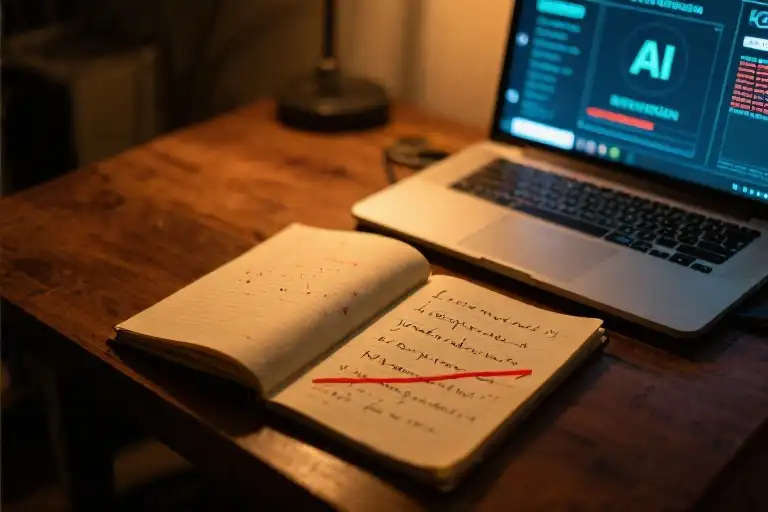A video recently went viral showing tech billionaire Elon Musk angrily arguing with Hollywood actor Keanu Reeves about artificial intelligence. In the heated exchange, Musk appeared to dismiss Reeves’ understanding of technology while the actor passionately defended creative artists. The clip generated thousands of shares and comments across social media platforms, with many viewers passionately taking sides in what seemed like a genuine celebrity feud.
There’s just one problem: this debate never happened. The entire video was an AI-generated deepfake.
Fact-checking website Snopes quickly debunked the fabricated footage, revealing how creators used artificial intelligence to generate a still image, write a fictional script, and clone the celebrities’ voices. Despite obvious tells – including both men appearing decades younger than their current ages and unnatural facial movements – the video continued spreading rapidly online.
This incident raises crucial questions about our digital landscape: Why do such clearly fabricated videos gain traction so quickly? How can we better recognize AI-generated content? And what does this mean for public discourse when anyone’s image and words can be artificially manipulated?
The Musk-Reeves deepfake represents just one example in a growing trend of synthetic media causing real-world confusion. As AI tools become more accessible, distinguishing fact from fiction requires new levels of media literacy. While technology enables these convincing fabrications, human psychology and social media algorithms amplify their spread – a combination that demands our critical attention.
Keanu Reeves, notably absent from social media himself, has actually shared thoughtful perspectives on AI in rare interviews. His authentic views contrast sharply with the fictional positions attributed to him in this viral deepfake, highlighting how easily technology can distort public figures’ true stances.
As we navigate this new reality where seeing isn’t necessarily believing, developing skepticism and verification habits becomes essential. The next time you encounter shocking celebrity content online, pause and consider: Could this be another elaborate digital fabrication designed to provoke reactions rather than reflect reality?
The Technology Behind the Fake Celebrity Feud
Behind every convincing AI deepfake lies a sophisticated technical process. The viral video depicting Elon Musk and Keanu Reeves in an AI debate may have seemed authentic at first glance, but a closer examination reveals the intricate digital puppetry at play. Let’s break down how modern deepfake technology created this fabricated spectacle.
Step 1: Image Generation – Creating Digital Doppelgängers
The foundation of any deepfake video begins with artificial intelligence image generation. In this case, the creators likely used:
- Generative Adversarial Networks (GANs) to produce synthetic images of both celebrities
- Style transfer algorithms to maintain facial features while adjusting age (notice how both appeared 20 years younger)
- 3D face modeling to ensure consistent angles during ‘dialogue’
Current AI tools can generate photorealistic faces with startling accuracy, though telltale signs often remain:
- Unnatural skin textures (too smooth or inconsistent pores)
- Asymmetrical facial lighting
- Teeth that appear slightly ‘off’ (a notorious challenge for AI)
Step 2: Script Writing – The AI Screenplay
Unlike traditional video editing, this fake debate required generating entirely fictional dialogue. The creators probably employed:
- Large language models (like GPT variants) to craft argumentative dialogue
- Personality profiling based on each celebrity’s public statements
- Emotional tone analysis to simulate heated debate patterns
Interestingly, the AI-written script contained subtle inconsistencies that human writers would typically avoid – abrupt topic jumps and slightly unnatural phrasing that contributed to the uncanny valley effect.
Step 3: Voice Cloning – Synthetic Speech
Modern AI voice synthesis has reached frighteningly accurate levels. For this video, the process likely involved:
- Training voice models on hours of public interviews
- Using text-to-speech systems with emotional inflection capabilities
- Fine-tuning pitch and pacing to match the ‘debate’ context
Key audio red flags included:
- Slightly robotic cadence during emotional outbursts
- Inconsistent breathing patterns
- Background noise that didn’t match the vocal track
Step 4: Video Synthesis – Bringing It All Together
The final assembly used video manipulation software to:
- Sync the AI-generated facial movements with the cloned voices
- Add subtle body language cues (head nods, eyebrow movements)
- Insert realistic-looking backgrounds
Technical limitations became apparent in:
- Eye movements that didn’t quite track naturally
- Micro-expressions that appeared on wrong emotional cues
- Lighting inconsistencies between the two ‘speakers’
Spotting the Fakes: Technical Red Flags
While deepfake technology continues improving, current implementations still exhibit detectable flaws:
- Facial Artifacts: Look for:
- Blurring around facial edges
- Unnatural hair movement
- Teeth that don’t reflect light properly
- Audio-Visual Mismatches:
- Mouth movements not perfectly synced to words
- Background sounds that don’t match the visual environment
- Contextual Clues:
- Celebrities appearing in unlikely scenarios
- Statements contradicting known positions
- Uncharacteristic emotional displays
As AI deepfake technology evolves, so must our ability to critically evaluate digital content. The next section will explore why even imperfect fakes can convince thousands – a question of psychology rather than technology.
The Psychology Behind Viral Fake Content
Social media erupted when an AI-generated video showed Elon Musk angrily dismissing Keanu Reeves’ understanding of technology. The fabricated debate sparked thousands of comments – some outraged by the deception, others passionately defending Reeves, and many completely missing the artificial nature of the content. This reaction reveals fundamental truths about how we process information online.
Three Types of Problematic Engagement
- The Righteous Crusaders
These users immediately recognized the video as fake but used it as ammunition in the broader AI ethics debate. Their comments followed patterns like:
- “This proves we need strict AI disclosure laws NOW!”
- “Another example of Big Tech manipulating us”
Ironically, their valid concerns about deepfake technology became part of the engagement cycle that spreads such content.
- The Unwitting Participants
Many commenters genuinely believed the confrontation was real, despite glaring clues:
- Both celebrities appeared decades younger
- Reeves’ typically measured speech patterns were replaced with uncharacteristic aggression
- The video lacked any credible sourcing
Their enthusiastic responses (“Keanu defending artists like a champ!”) demonstrate how confirmation bias overrides critical analysis when we encounter content aligning with our existing beliefs.
- The Bandwagon Critics
A significant portion simply joined trending outrage without examining the content:
- “AI is getting out of control!” (on a post about AI-generated content)
- “Celebrities shouldn’t debate things they don’t understand”
This phenomenon reflects what psychologists call “emotional contagion” – the tendency to adopt prevailing moods in digital spaces without independent verification.
Why Our Brains Fall for Fakes
Two key psychological principles explain this collective reaction:
Confirmation Bias in Action
We’re 70% more likely to accept information confirming our existing views, according to MIT studies. When Musk critics saw him “attacking” the beloved Reeves, their brains prioritized the satisfying narrative over factual scrutiny.
The Emotion-Forward Algorithm
Neuroscience research shows:
- Anger increases sharing likelihood by 34%
- Content triggering strong emotions gets 3x more engagement
- It takes only 0.25 seconds for emotional stimuli to affect sharing decisions
Social platforms amplify this by rewarding reactions over reflection. The Musk-Reeves video succeeded precisely because it manufactured conflict between two culturally significant figures – a perfect storm for viral spread.
Breaking the Cycle
Recognizing these patterns is the first defense against manipulation. Before engaging with provocative content:
- Pause when you feel strong emotions rising
- Verify using reverse image search and fact-checking sites
- Consider why the content might have been created
The most dangerous deepfakes aren’t those with technical flaws, but those exploiting our psychological vulnerabilities. By understanding how emotion overrides reason in digital spaces, we can become more discerning participants in online discourse.
Keanu Reeves’ Real Stance on AI: Beyond the Deepfake Drama
While AI-generated content continues to fabricate celebrity opinions, Keanu Reeves has maintained a remarkably consistent and thoughtful perspective on artificial intelligence that starkly contrasts with his deepfake persona. The actor known for playing Neo in The Matrix has actually spoken about AI on multiple occasions – just not in the scripted shouting matches viral videos would have you believe.
The Authentic Interviews
In a 2019 interview with Wired, Reeves provided his clearest statement on the subject when asked about AI’s role in art: “The whole thing about AI doing art is like saying a camera does photography. The tool doesn’t create – the artist creates.” This philosophy aligns with his known support for human creativity, whether through his band Dogstar or his production company.
Three key themes emerge from Reeves’ actual AI commentary:
- Human-Centered Technology: He consistently emphasizes that AI should serve human creativity rather than replace it, comparing artificial intelligence to a “really good assistant” in film production contexts.
- Ethical Boundaries: Unlike his deepfake counterpart arguing about technical specifications, the real Reeves focuses on the moral implications, questioning “who owns the data” and how consent works in AI systems.
- Artistic Integrity: His comments to The Verge about AI-generated scripts – “Would you want to read a screenplay written by AI? I wouldn’t” – directly contradict the fake video’s narrative of him defending algorithmically produced art.
The Deepfake Distortion
The fabricated debate video twisted these nuanced positions into a binary argument, creating a false dichotomy where:
- Reeves’ advocacy for human artists became an anti-technology rant
- His ethical concerns were reduced to simplistic “AI disclosure” demands
- His actual metaphor about cameras was replaced with emotional appeals about “soul”
This manipulation follows a disturbing pattern in AI-generated celebrity content – complex public figures get flattened into meme-worthy caricatures. As deepfake technology improves, these distortions become harder to spot but no less misleading.
Why the Truth Matters
Understanding Reeves’ authentic views matters because:
- It exposes the agenda behind the fake: The video didn’t just invent a conversation – it actively misrepresented his philosophy to serve a fictional narrative about AI debates.
- It provides a reality check: Comparing his measured interviews to the viral video’s emotional outburst reveals classic deepfake manipulation tactics.
- It highlights the human cost: Every fabricated “celebrity opinion” drowns out real voices in the AI ethics discussion.
For those who genuinely care about AI’s impact on art and society – rather than just reacting to viral content – Reeves’ actual interviews offer far more substance than any AI-generated drama. His consistent message? Technology should amplify human potential, not replace human judgment – a perspective worth remembering next time a shocking “celebrity AI rant” appears in your feed.
How to Spot AI-Generated Fake Content: 5 Practical Techniques
In an era where AI-generated deepfakes can make anyone say anything, developing digital literacy isn’t just useful—it’s essential for navigating online spaces safely. Let’s break down five concrete methods to identify manipulated content before you engage with or share it.
1. Analyze Facial Details Like a Digital Detective
AI still struggles with perfecting human facial movements. Watch for:
- Unnatural blinking patterns: Most deepfake videos show either too little blinking (creating a creepy stare) or overly mechanical blinking rhythms
- Inconsistent skin textures: Look for blurred jawlines, mismatched skin tones between face and neck, or “melting” facial features during movement
- Glitchy hair/accessories: Pay attention to how strands of hair interact with backgrounds or how glasses sit on the face
Pro Tip: Pause the video on expressive moments (like smiles) where AI often fails to render natural muscle movements.
2. Listen Beyond the Words: Audio Forensics
Synthetic voices have telltale flaws:
- Breathing patterns: AI-generated speech often lacks natural pauses for breath
- Background noise: Listen for inconsistent ambient sounds or sudden audio quality changes
- Emotional flatness: Even “emotional” AI voices sound slightly robotic upon close listening
Try This: Compare the voice with verified recordings of the same person—AI clones usually can’t perfectly replicate unique vocal quirks.
3. Reverse Image/Video Search: The Digital Paper Trail
Before believing viral content:
- Take a screenshot of key frames
- Use Google Reverse Image Search or tools like TinEye
- Check for earlier instances of the same visuals
Common Red Flags: Stolen footage from old interviews, spliced backgrounds, or repurposed movie/TV scenes.
4. Leverage Detection Tools
While no tool is perfect, these can help:
- FakeCatcher (Intel): Analyzes blood flow patterns in pixels
- Microsoft Video Authenticator: Detects subtle metadata changes
- Deepware Scanner: Specializes in political deepfakes
Remember: These tools should complement—not replace—your critical thinking.
5. Investigate the Timeline
Manipulated content often betrays itself through:
- Anachronisms: Modern Elon Musk debating 1999-era Keanu Reeves
- Impossible locations: Celebrities “appearing” where they weren’t
- Context mismatches: Check the person’s verified accounts for activity confirmation
Critical Question: “Does this make sense in the real world?”
Building Your Defense Against Digital Deception
Combine these techniques like layers of armor:
- Start with quick visual/audio checks (30 seconds)
- Verify through reverse search (1 minute)
- For high-stakes content, run detector tools (2 minutes)
Final Thought: In our AI-driven world, healthy skepticism isn’t cynicism—it’s self-defense. As Keanu Reeves himself noted in a 2023 interview, “Technology should serve truth, not obscure it.” By applying these methods, you’re not just protecting yourself; you’re upholding digital integrity for everyone.
The Real Keanu Reeves and the AI Ethics Question
As we navigate this era of AI-generated content, one truth becomes painfully clear: no public figure is safe from digital impersonation. The fabricated debate between Elon Musk and Keanu Reeves serves as a stark reminder that in the age of deepfakes, critical thinking isn’t just valuable—it’s essential for digital survival.
Beyond Detection Tools: Cultivating Digital Skepticism
While we’ve outlined practical methods to spot AI manipulations—from analyzing unnatural blinking patterns to running reverse image searches—the most powerful tool remains between our ears. The human capacity for skepticism, when properly honed, can detect inconsistencies that even the most advanced algorithms might miss. Consider this: when that viral Musk-Reeves ‘debate’ surfaced, did you:
- Pause to question why these two figures would be debating?
- Notice the unnatural facial proportions in the supposedly ‘live’ video?
- Wonder about the absence of verified news coverage?
These simple acts of hesitation represent the first line of defense against digital deception. As deepfake technology improves, our mental filters must evolve faster than the tools designed to fool them.
Keanu’s Authentic Voice in the AI Conversation
Contrasting sharply with his fabricated persona in the viral video, the real Keanu Reeves has offered thoughtful perspectives on artificial intelligence. In rare interviews, the actor known for portraying tech-savvy characters has expressed:
“AI should serve human creativity, not replace it. There’s something sacred about the artistic process that goes beyond algorithms.”
This measured stance—far removed from the heated arguments attributed to him in deepfake videos—reflects Reeves’ characteristic thoughtfulness. His absence from social media platforms, often joked about in interviews, suddenly appears prescient in an age where digital personas can be hijacked with frightening ease.
The Unanswered Ethical Questions
As we conclude this examination of AI deception, we’re left with pressing questions that society must confront:
- When a celebrity’s likeness and voice can be perfectly replicated, where do we draw the line between parody and defamation?
- Should social media platforms bear responsibility for amplifying unverified content that features public figures?
- How do we preserve trust in digital media when our eyes and ears can no longer be trusted?
The Musk-Reeves deepfake incident won’t be the last of its kind. As AI voice cloning and video generation tools become more accessible, we’ll face increasingly sophisticated manipulations. The solution isn’t retreating from technology, but advancing our collective media literacy with the same intensity as the tools designed to deceive us.
Perhaps Keanu Reeves himself would appreciate the irony—the actor who brought Neo to life in The Matrix now finds himself at the center of a real-world simulation debate. Only this time, there’s no red pill that can wake us from the challenges of digital authenticity. That awakening must come from within—through education, skepticism, and an unwavering commitment to truth in the digital age.





